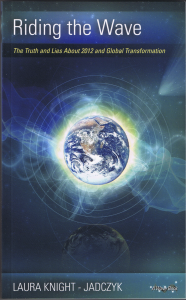As to the ozone hole, the phenomena is fairly well understood in solar/geophysics. The solar wind is known to deplete the ozone layer, and it would naturally be drawn to interact at the poles. Research on this has been going on openly for a couple decades, but is still under-reported (as it would undermine the climate change narrative).
To me, this suggests the ongoing weakening/destabilization of the earth's magnetic field. To illustrate the process, I'll shortly quote from this study:
Solar proton events of October–November 2003: Ozone depletion in the Northern Hemisphere polar winter as seen by GOMOS/Envisat

agupubs.onlinelibrary.wiley.com
[2] Solar proton events (SPE) correspond to solar coronal mass ejections (CME) during which a large amount of protons and heavier ions are emitted, sometimes toward the Earth. Solar protons entering the Earth's magnetosphere are guided by the Earth's magnetic field and precipitate into the polar cap areas. Since the protons can have very high energy, up to tens of MeVs, they deposit their energy in the mesosphere and stratosphere. Thus they provide a direct connection between the Sun and the Earth's middle atmosphere. SPEs are sporadic although more probable during solar maxima. But when occurring they provide extreme forcing on the middle atmosphere.
[3] The precipitating particles produce 1) odd hydrogen HO
x (H + OH + HO2) through chemistry associated with ion pair production, water cluster ion formation, and subsequent neutralization, and 2) odd nitrogen NO
x (N + NO + NO2) through dissociation of molecular nitrogen via charged particle impact [
Crutzen et al., 1975;
Solomon et al., 1981;
Rusch et al., 1981]. HO
x and NO
x play a key role in ozone balance of the middle atmosphere because they destroy odd oxygen through catalytic reactions [see, e.g.,
Brasseur and Solomon, 1986, pp. 291–299]. The produced HO
x has a relatively short lifetime, but without solar radiation NO
x chemical loss is inefficient. Therefore the NO
x produced during polar night has a long chemical lifetime and is transported to lower altitudes and latitudes [
Siskind et al., 1997;
Callis and Lambeth, 1998]. Significant depletions of ozone concentrations after large solar proton events have been predicted by atmospheric modelling [
Rusch et al., 1981;
Solomon et al., 1983;
Reid et al., 1991;
Jackman et al., 2000] and this phenomenon has been captured in the dayside middle atmosphere using satellite measurements [
Thomas et al., 1983;
McPeters and Jackman, 1985;
Jackman et al., 2001;
Randall et al., 2001].
---
A rapid search in google scholar has quickly led to multiple other iteresting published/peer reviewed studies. It does seem to me like pretty straightforward physics that shooting an accelerated/ionized proton wind (hydrogen atoms without the electron) would be easily able to tear apart ozone and reconstitute water/ROS + oxygen, through various pathways. My 2 cents.




